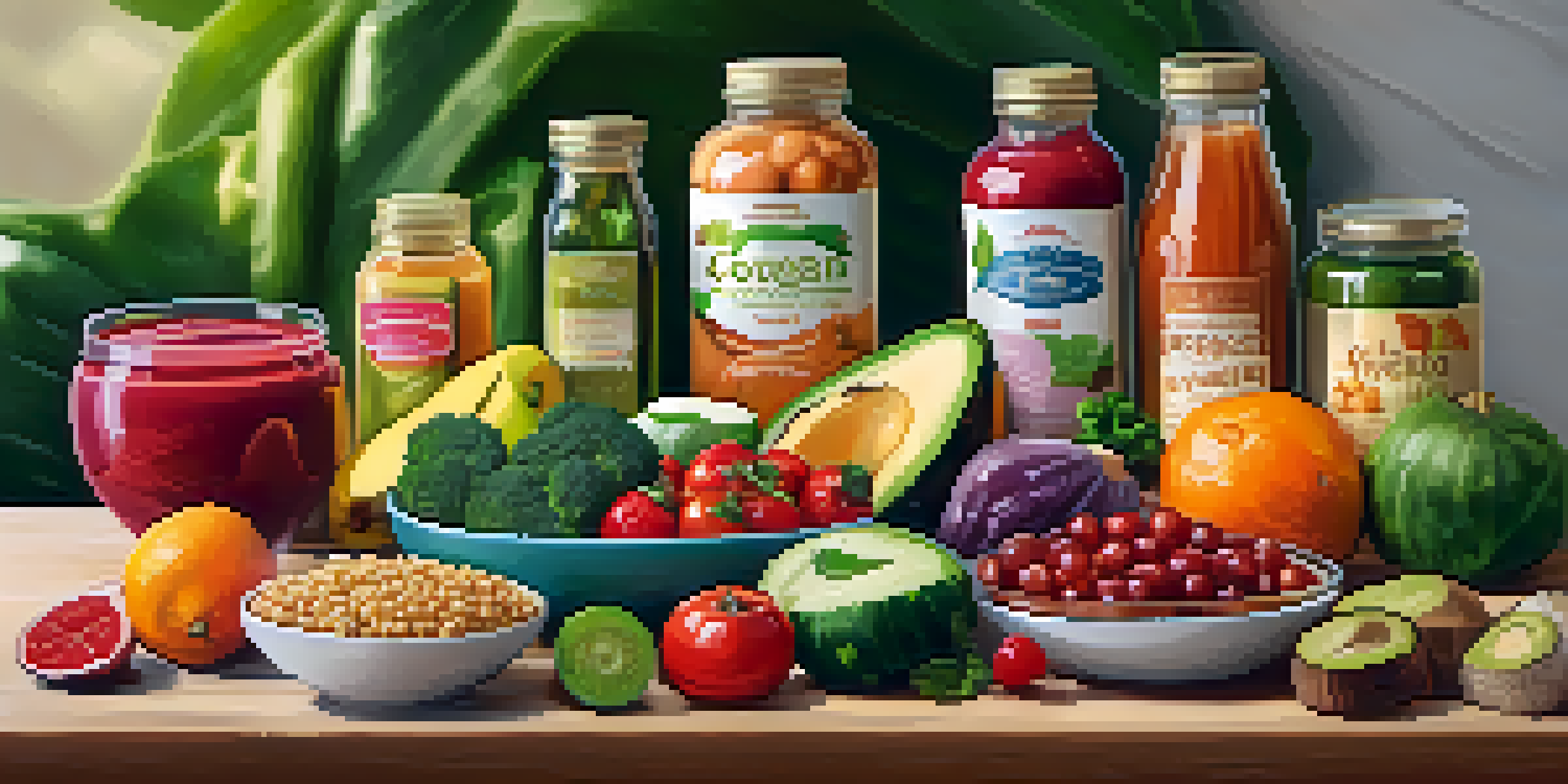Decoding Vegan Food Labels: What to Look For and Why

Understanding Vegan Labels: The Basics
When you pick up a product, the first thing to look for is a clear vegan label. This often appears as a leaf symbol or the word 'vegan' prominently displayed. These labels indicate that the product does not contain any animal-derived ingredients, making it a suitable choice for those following a vegan lifestyle.
You are what you eat, so don't be fast, cheap, easy, or fake.
However, it's essential to remember that not all vegan products are created equal. Just because something is labeled vegan doesn't mean it’s healthy. For instance, vegan cookies can still be high in sugar and unhealthy fats. So, always be mindful of the overall nutritional content, not just the vegan certification.
In addition to the vegan label, familiarize yourself with common animal-derived ingredients to watch out for, such as gelatin, casein, and honey. Understanding these terms will empower you to make better informed choices while shopping.
The Importance of Ingredient Lists
Ingredient lists are your best friend when it comes to decoding food labels. They provide a comprehensive rundown of what's actually inside the product. By reading the ingredient list, you can spot unwanted additives and determine if the product aligns with your dietary preferences.

Look for products with short ingredient lists that feature whole food items. Ingredients like nuts, seeds, and whole grains are often signs of a healthier option. Conversely, if you see a long list filled with hard-to-pronounce chemicals, it might be best to put that product back on the shelf.
Know Your Vegan Labels
Look for clear vegan labels and be cautious of unhealthy ingredients in vegan products.
Additionally, pay attention to the order of ingredients. Ingredients are listed in descending order by weight, meaning the first few items make up the bulk of the product. If you see sugar or unhealthy fats listed near the top, it’s a signal to reconsider your purchase.
Identifying Common Vegan Misconceptions
Many people assume that all vegan products are inherently healthy, but that's a misconception. For example, vegan junk food like chips and candies can still be loaded with unhealthy additives. It’s important to separate the idea of being 'vegan' from being 'healthy.'
The food you eat can be either the safest and most powerful form of medicine or the slowest form of poison.
Another common myth is that vegan options are always cruelty-free. While they avoid animal ingredients, the production methods can still harm the environment or exploit workers. So, it's wise to consider the source and ethics behind your food choices.
Engaging with vegan communities or resources can help clarify these misconceptions. By sharing experiences and information, you can make more informed decisions that align with your values and health goals.
Nutritional Information: What to Check
The nutritional information label is crucial for understanding what you're consuming. It provides details on calories, fats, sugars, and proteins. For those following a vegan diet, it's important to ensure you're getting enough protein and essential nutrients such as B12, iron, and omega-3 fatty acids.
When checking the label, look for products that provide a good balance of macronutrients. For example, snacks that are high in fiber and protein can help keep you full longer. On the other hand, be cautious of products high in sodium or saturated fats.
Read Ingredient Lists Carefully
Short ingredient lists with whole food items indicate healthier choices, while long lists may contain unwanted additives.
Don't shy away from asking questions or seeking recommendations when in doubt. Many brands are more than happy to provide additional nutritional information to help you make the best choices.
Organic vs. Non-Organic: Making the Choice
The debate between organic and non-organic products often confuses consumers. Organic foods are grown without synthetic pesticides or fertilizers, which can be beneficial for both health and the environment. If you’re concerned about chemical exposure, opting for organic vegan products might be a wise choice.
However, organic products can also come at a higher price point. It's essential to weigh the pros and cons based on your budget and health priorities. Sometimes, opting for conventional produce is perfectly acceptable, especially if you wash them thoroughly.
Ultimately, whether you choose organic or non-organic, the key is to focus on whole, minimally processed foods. Prioritizing these options will lead to healthier eating habits, regardless of the label.
Reading Allergen Warnings: Stay Safe
Allergen warnings are critical, especially for those with food sensitivities. Many vegan products may still contain common allergens like nuts, soy, or gluten. Always check for these warnings to avoid adverse reactions.
Even if a product is labeled vegan, it could be manufactured in a facility that processes allergens. This is particularly important for individuals with severe allergies who need to be cautious about cross-contamination.
Understand Allergen Warnings
Always check allergen warnings on vegan products, as they may still contain common allergens or be produced in contaminated facilities.
To stay safe, it’s best to familiarize yourself with your personal allergens and stay vigilant when shopping. When in doubt, reach out to the manufacturer for clarification on their allergen practices.
Making Conscious Choices: Tips for Shoppers
Making conscious choices is about being informed and intentional about what you buy. Start by creating a list of must-have products that align with your dietary needs and preferences. This strategy can help streamline your shopping and reduce impulse buys.
Don’t hesitate to explore local markets or specialty stores where you might find unique vegan products. Engaging with local producers can also lead to discovering fresher, seasonal options that support sustainability.

Lastly, remember that being a conscious consumer is a journey. It’s about progress, not perfection. Celebrate your choices, and keep learning as you navigate the world of vegan food labels.